
This log house stood empty for 30 years—“We figured we’d make our dream come true all at once”
Iida and Mikko Nylander built their dream home at the edge of a lush meadow-woodland on an old log frame. The story of the main building is closely tied to their family history, which only came to light after the purchase.
Iida and Mikko Nylander live on an old settlement farm in Central Ostrobothnia, Finland. Just behind it is Iida’s childhood home and Finland’s largest spring water bottling plant, founded by her parents. The villagers drink water that has placed among the world’s best in taste tests. Iida’s parents have earned their living from it since the 1990s, and now Iida herself is helping the company flourish.
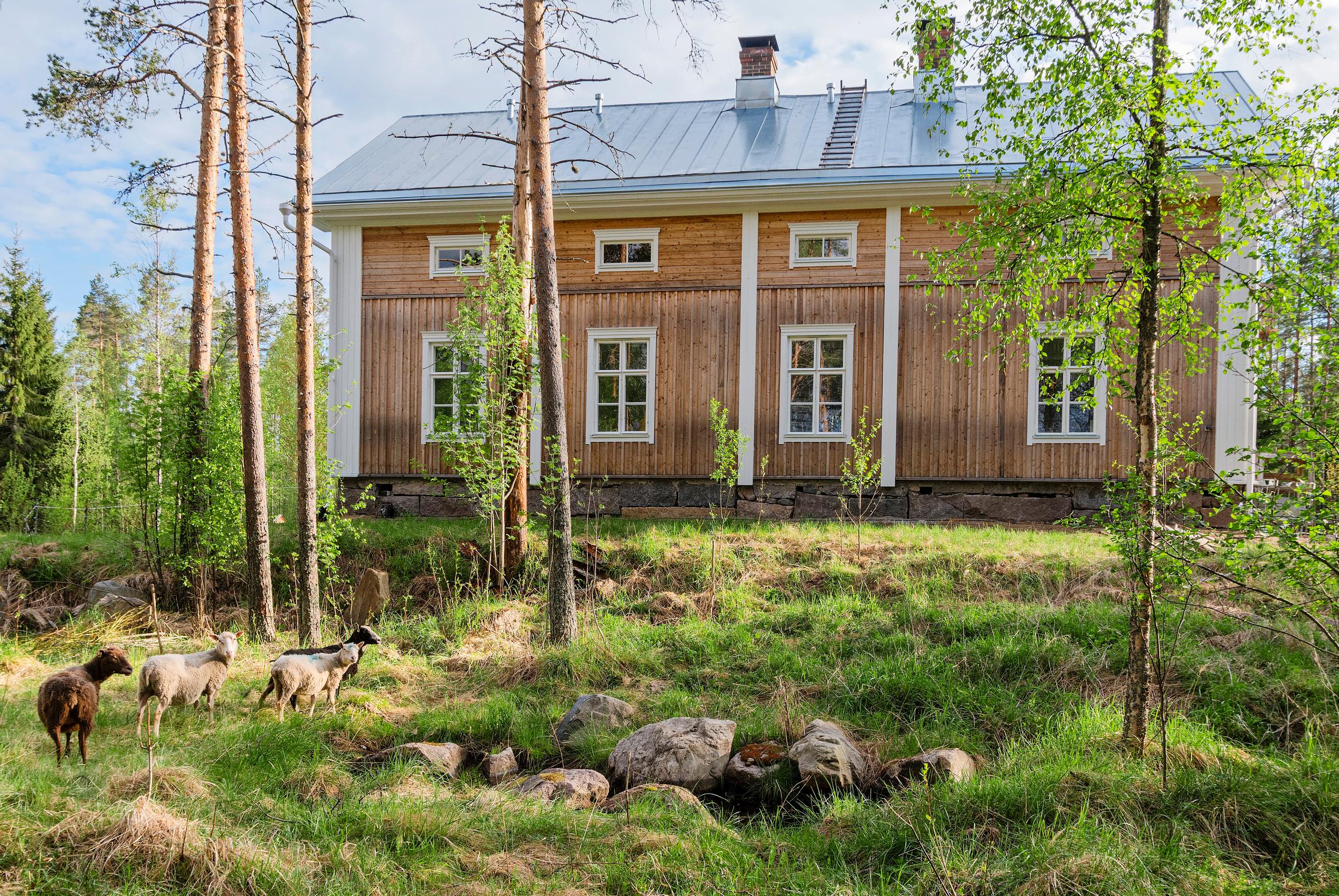
The Nylanders met in Hungary, where they were both exchange students. They finished their studies after coming back to Finland. When Mikko decided to continue his father’s trade as a traditional fireplace mason in his hometown, Iida moved too.
She liked the area, but wasn’t happy with her job at the bank. While she was considering a career change, she got a call from home: the family business needed help with sales, and her parents had two options for her. Iida chose the first one and became a sales coordinator at Finn Spring.
In the fall of 2011, the Nylanders got married in the old barn on Iida’s parents’ property, which had been renovated into a temporary home for the newlyweds. They had ruled out building a prefab house and decided to look for a renovation project.
“We knew that on every summer vacation we’d end up admiring old houses, saying, ‘Oh, how lovely—if only we could have one someday!’ So we figured we might as well go for our dream right away,” Iida explains.
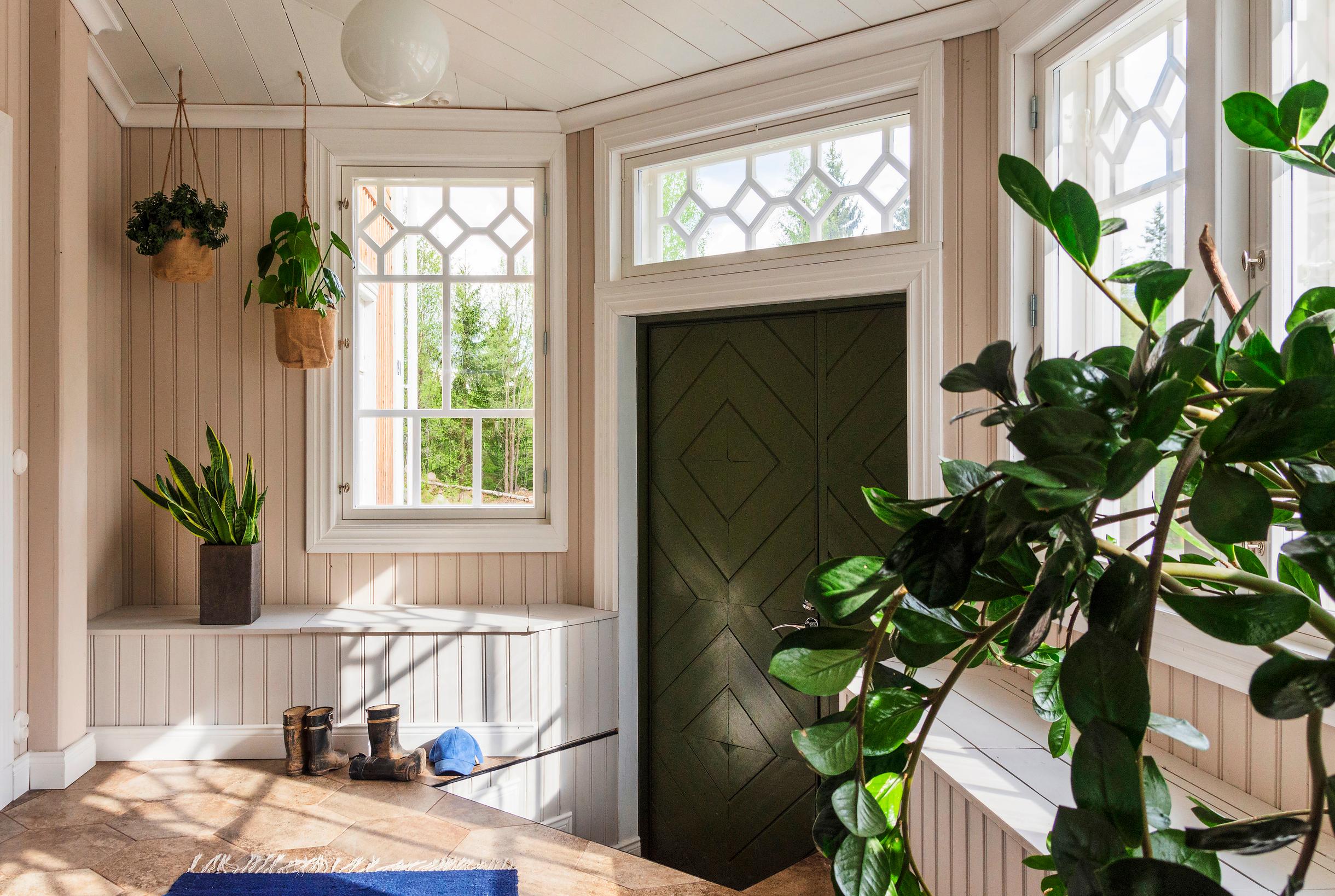
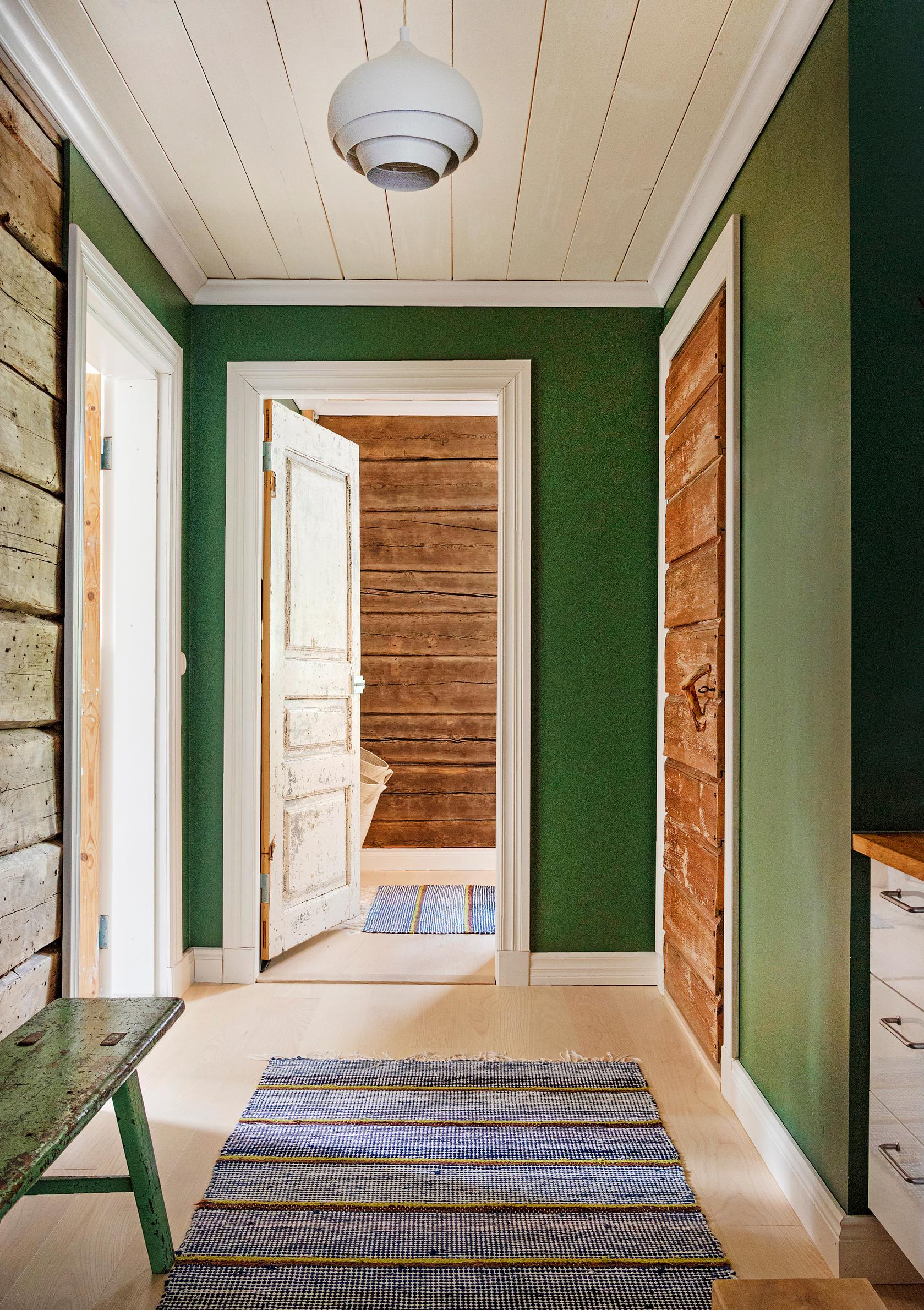
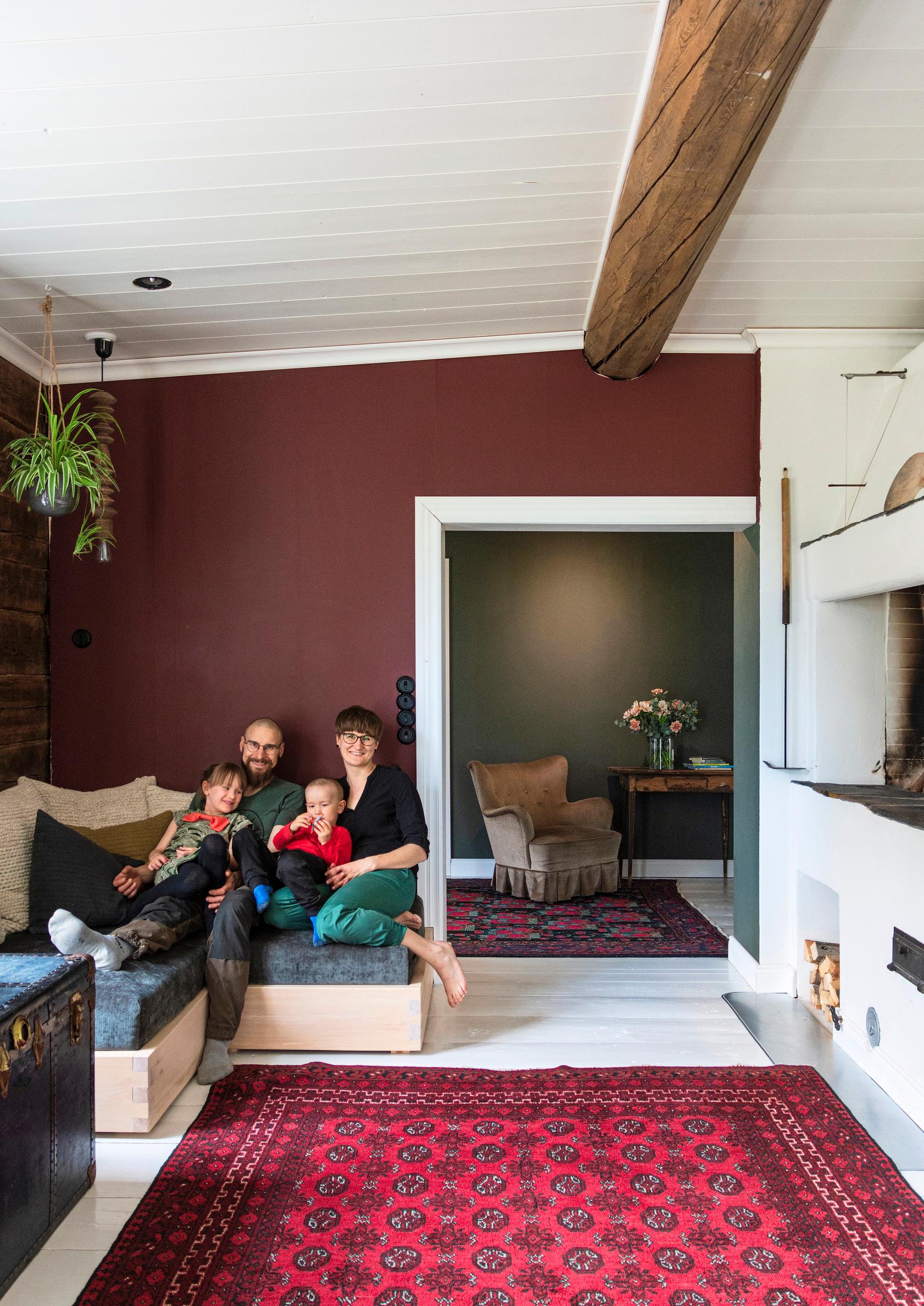
They couldn’t find a suitable log house until they saw an interesting listing online. The biggest draw was its location.
Iso-Laitala Farm used to be one of the largest farms in the town, and its main house was proportioned accordingly: 18.5 meters long and 9 meters wide. The logs were probably hewn along the upper stretches of the nearby river in the mid-1800s and floated downstream to the farm. The frame had apparently been raised at least once before it arrived at the farm.
This house has had a lot of visitors. Owned by the decorative painting Laitala family, it served not only the farm’s residents but also locals handling postal business and guests of the inn.
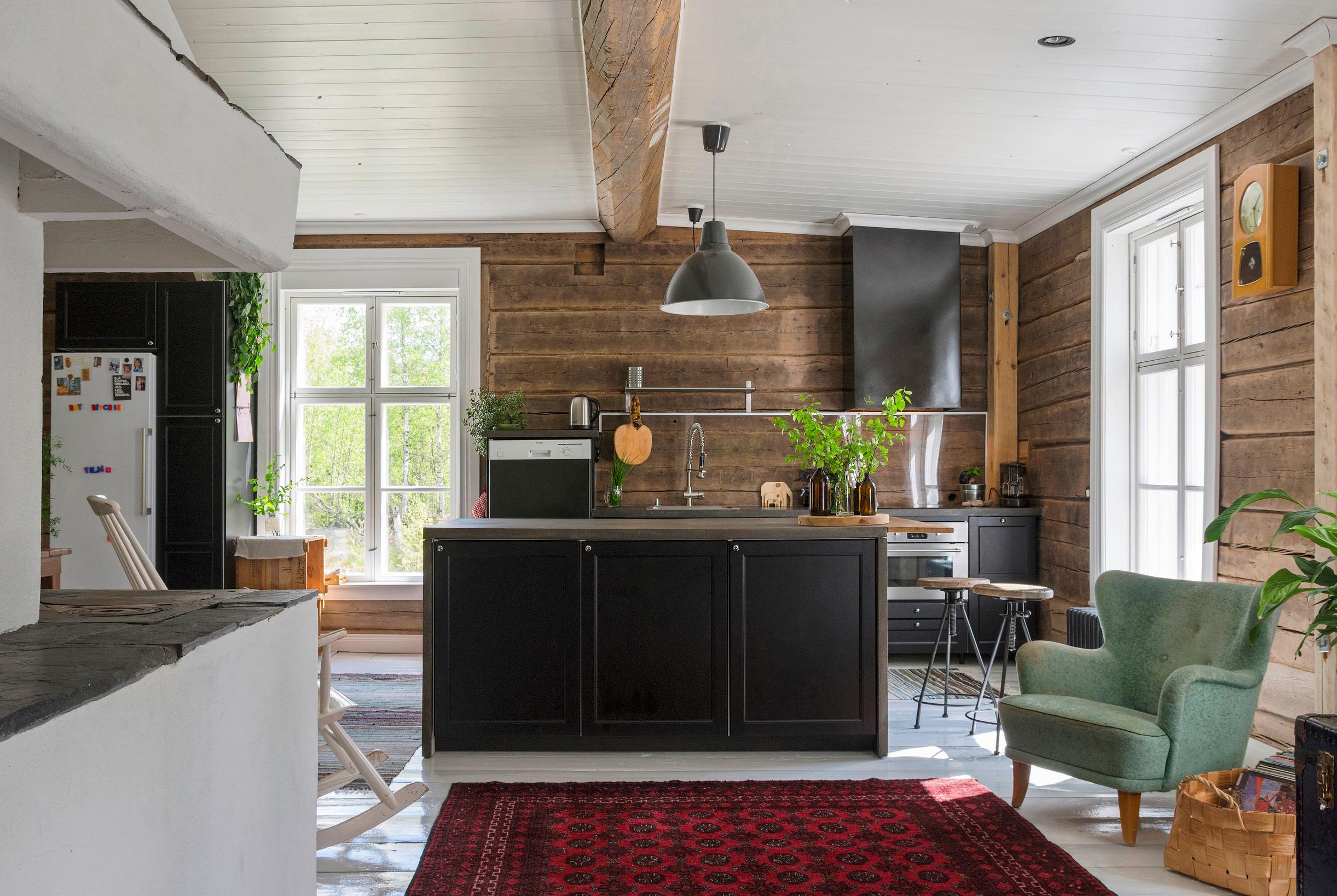
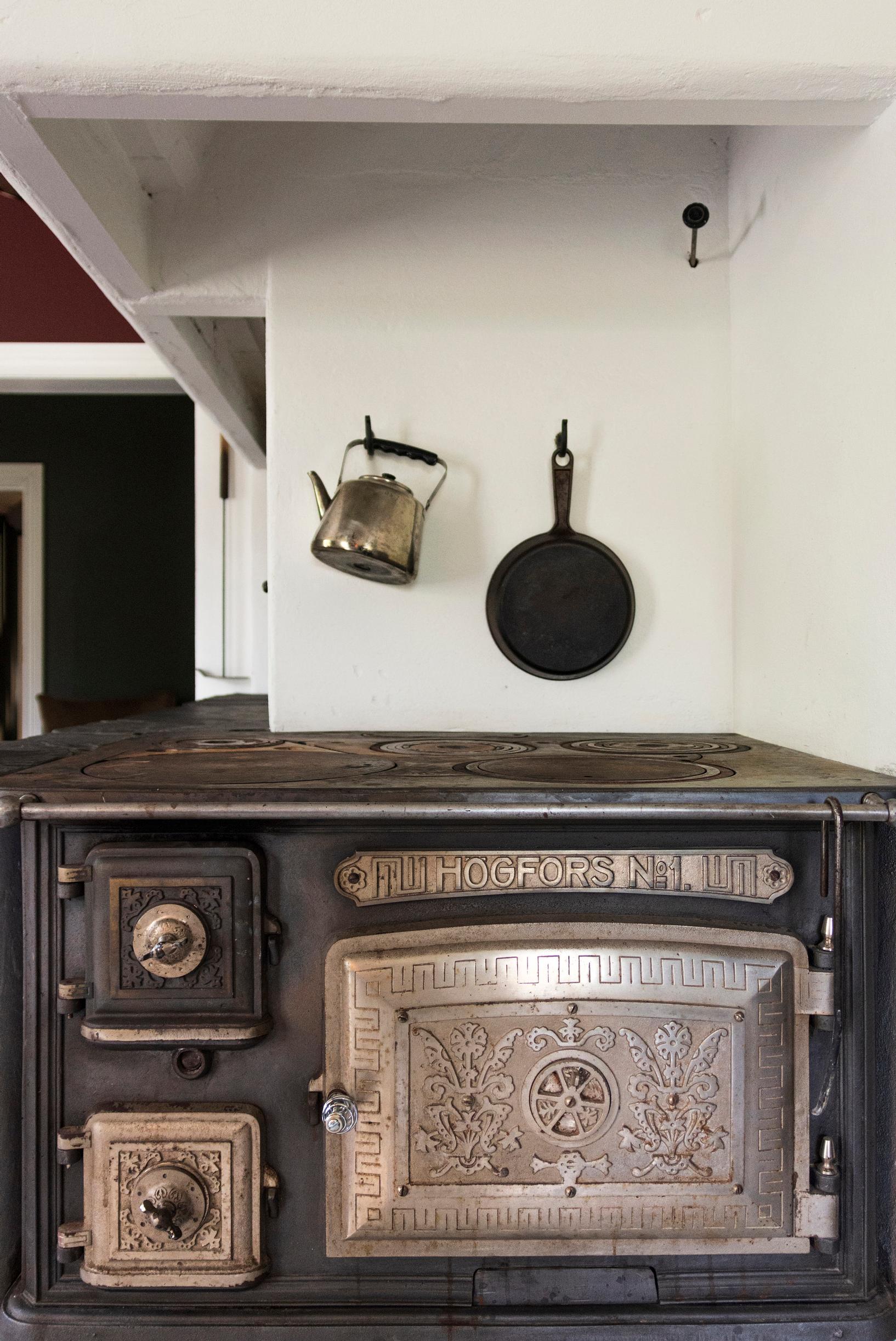
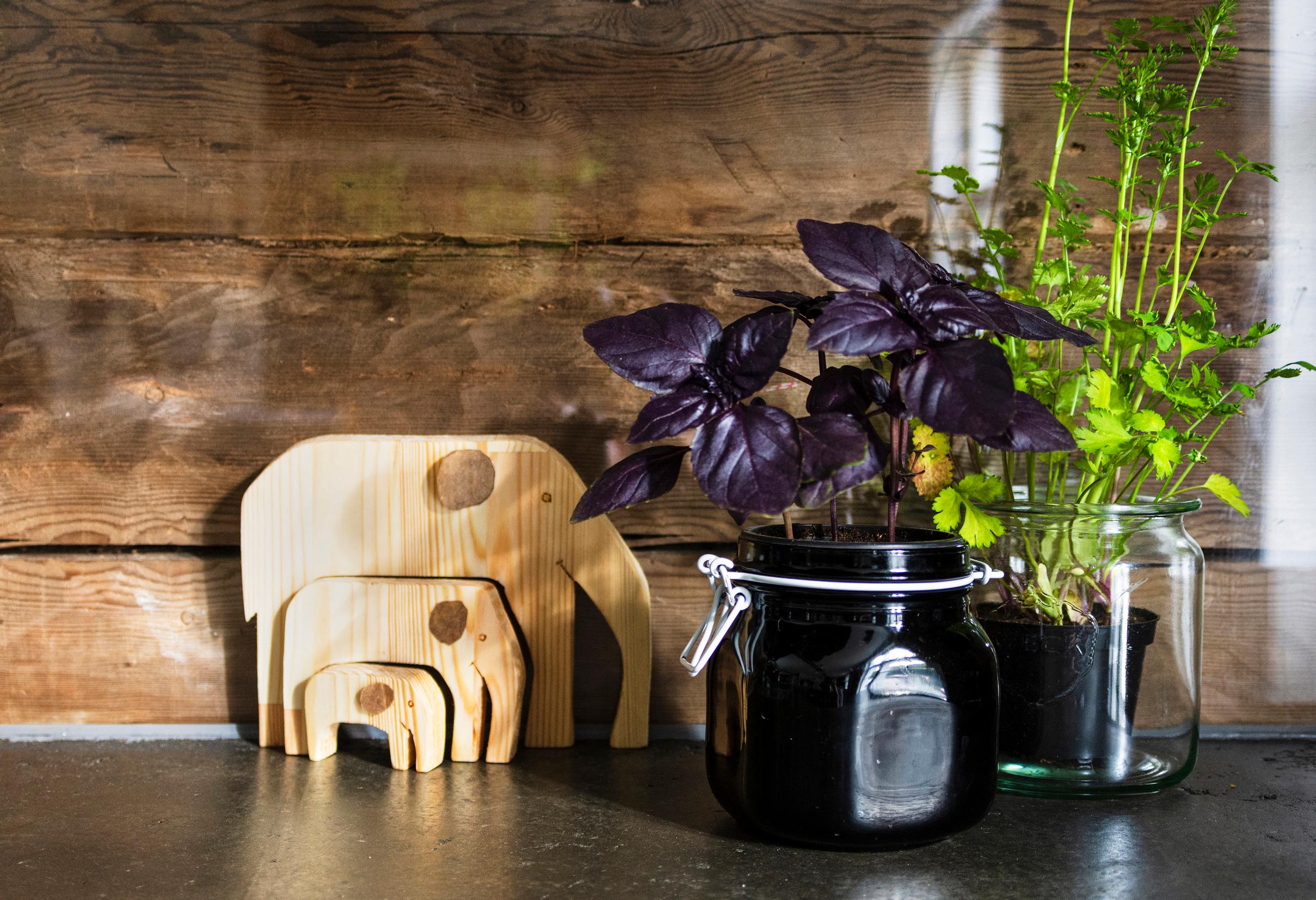
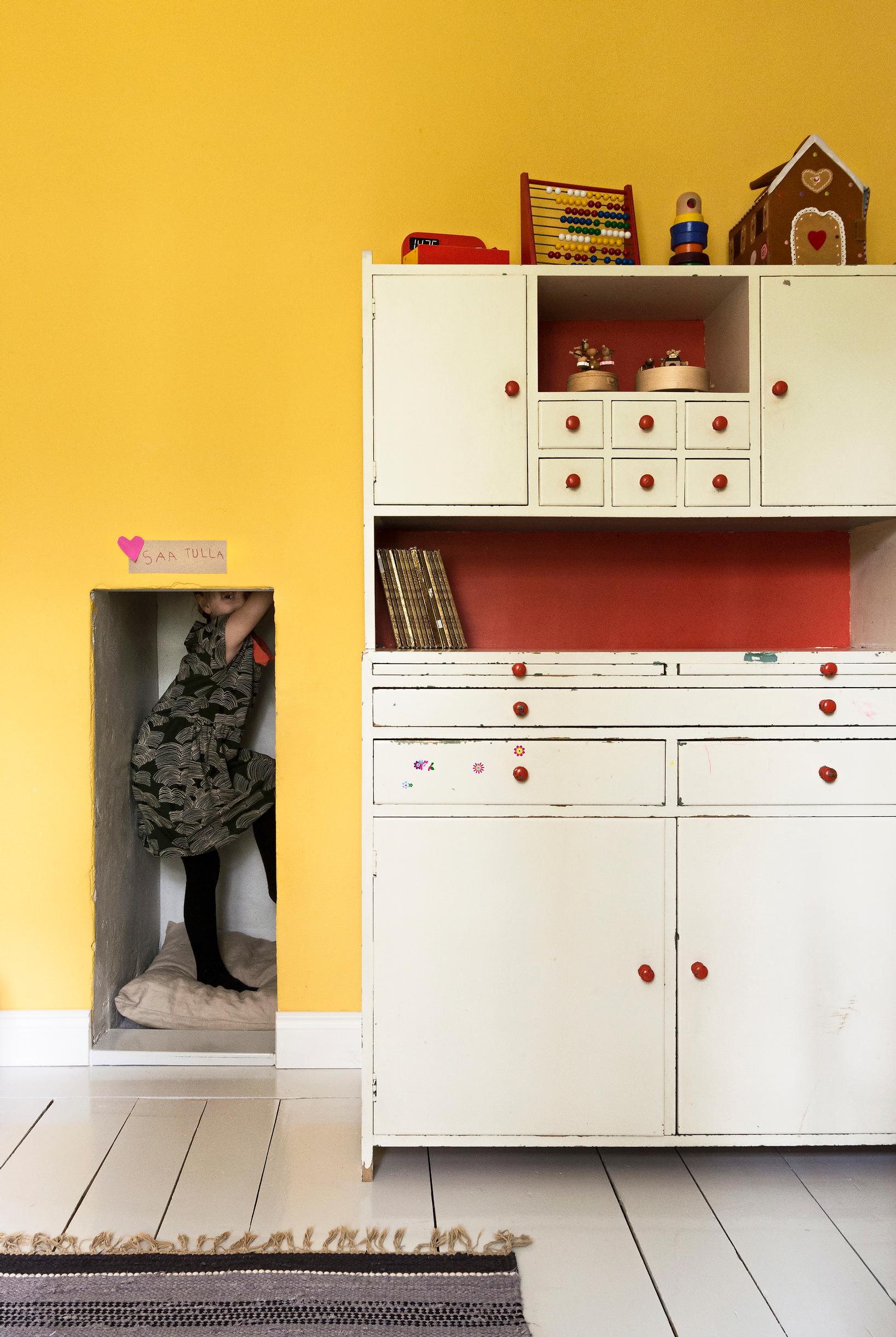
The house stood unheated for 30 years. That and the 1960s renovation choices had left their mark, but Mikko, who is a wood technology engineer, saw potential in the chipboard-covered walls. A heritage building expert, the now-late Erkki Hiipakka, came to inspect the frame, gave it a few taps, and confirmed Mikko’s view. The Nylanders went all in. They bought the Harjukumpu property from Iida’s father and decided to remove the dilapidated postwar house and replace it with the log frame they had discovered.
It was only after the purchase that the couple learned the house had once belonged to Iida’s family. Her great-great-grandfather and two other men had bought Iso-Laitala on a whim. The story goes that when they couldn’t afford to maintain it, the trio fled to America to escape their debts.
“Whether it’s just a story or not, we’ve now brought the house back into the family—hopefully for good,” Iida laughs.
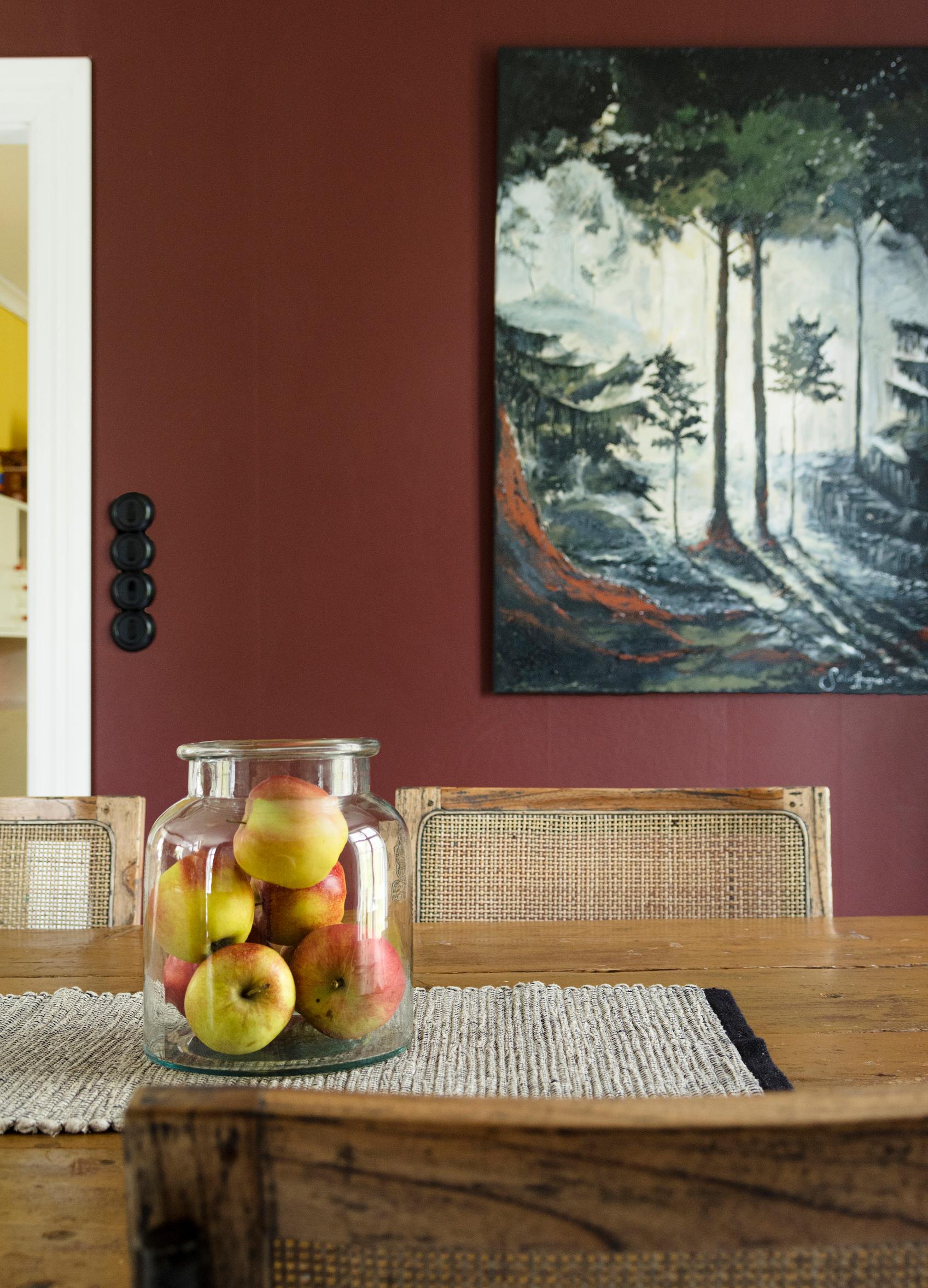
One advantage of a long construction timeline is that you don’t have to decide everything right away.
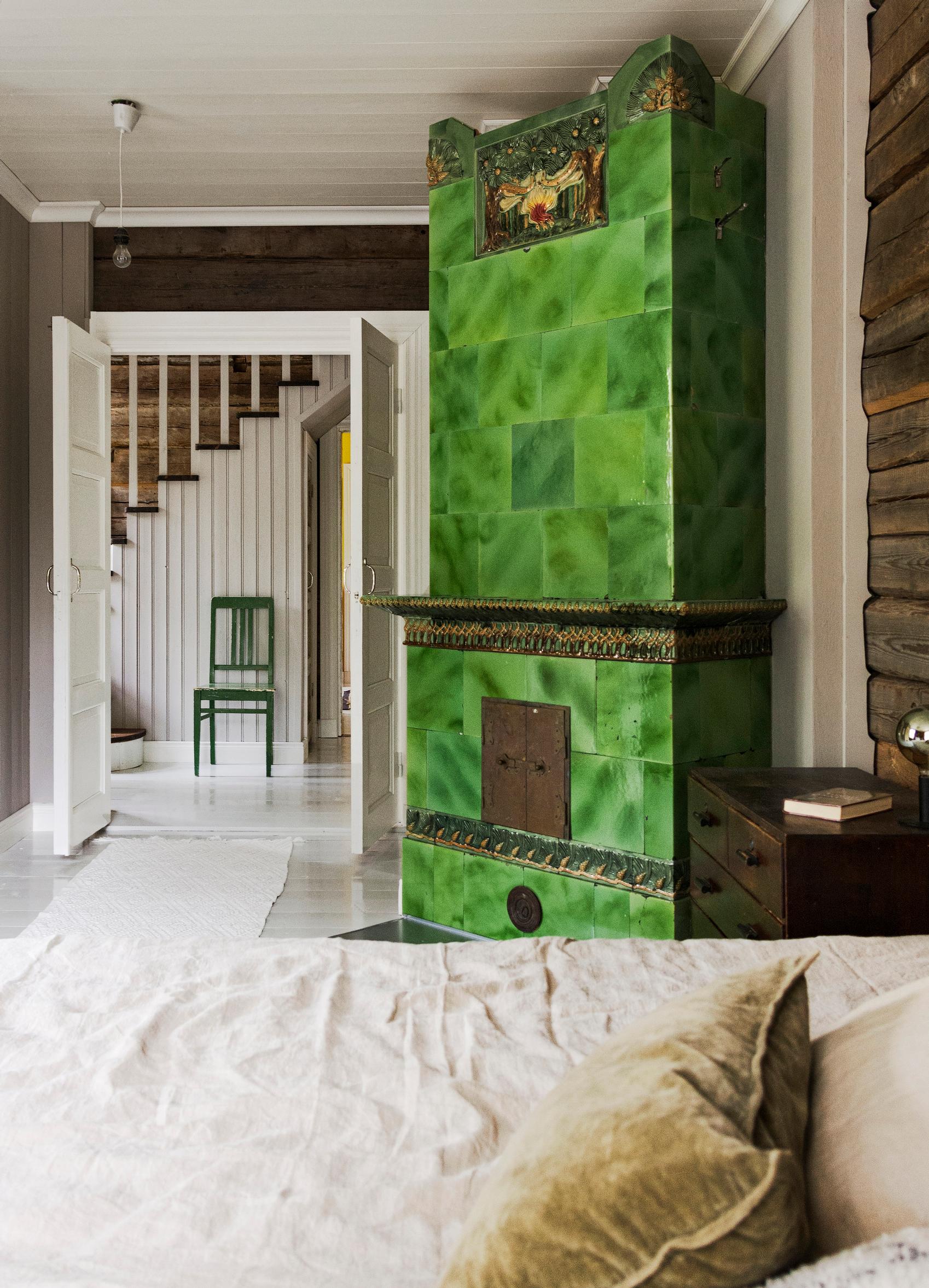
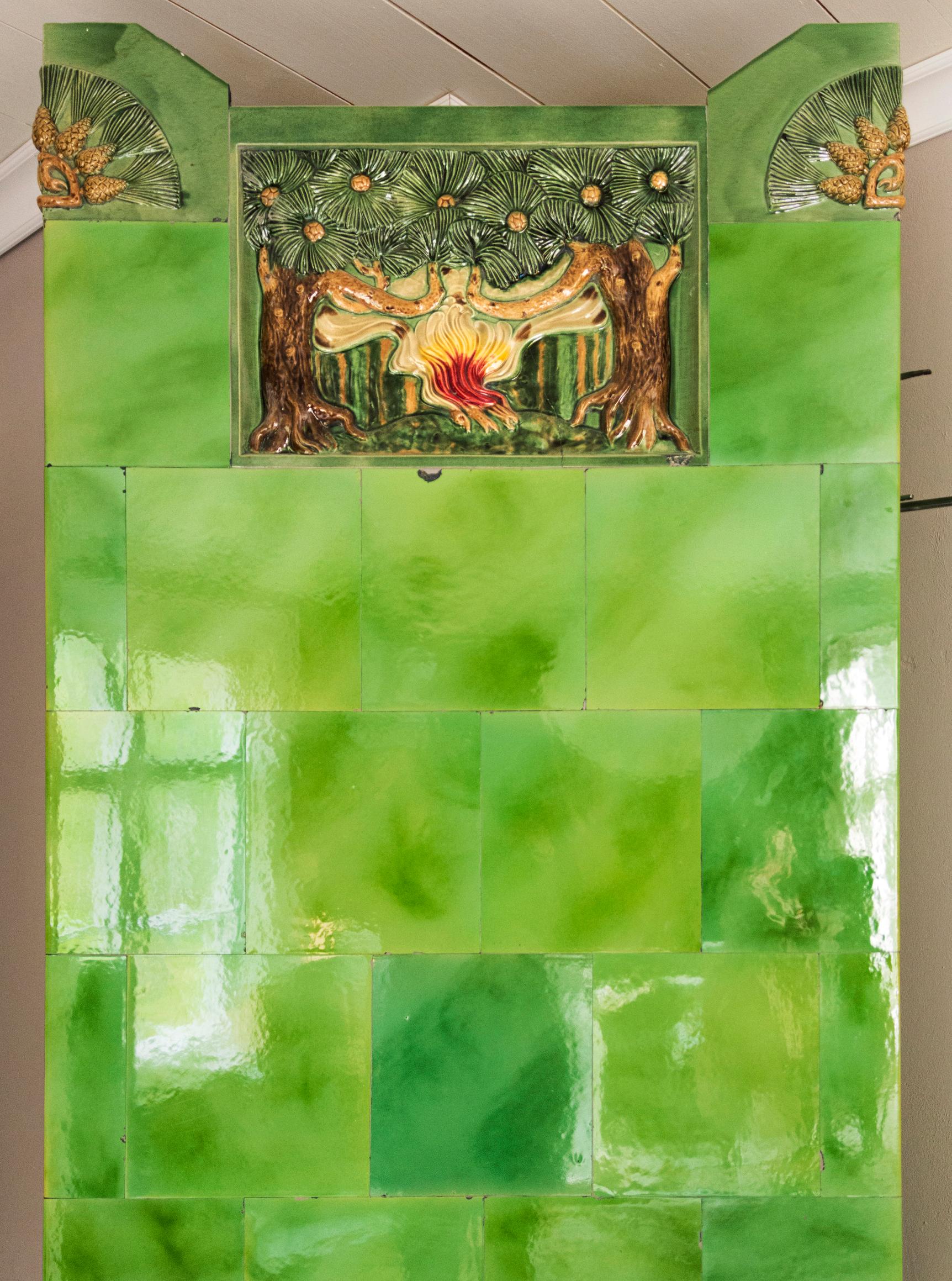
After sealing the deal, the couple left for their honeymoon and headed to Central America. During that trip, they planned their home’s layout so that the spacious main room would once again serve as the hub of everyday life.
A large stove-and-oven combo takes center stage. It can hold an entire wheelbarrow of their own firewood, and there’s a hidden spot on top where their preschooler Vilja and four-year-old Martti can climb in from their bedroom. Mikko and his father crafted the rectangular oven, and the stove itself is the original Högfors that came with the house.
Near the entrance to the main room is a decorative tiled stove Mikko rescued from a Helsinki apartment building. The parents’ bedroom boasts a Jugend-style tiled stove that Mikko’s father gave them as a wedding gift. These hearths warm the ground floor, where the ceilings are nearly three meters high.
The tall height wasn’t an asset when the Nylanders were cleaning the logs. One wall had been blasted with dry ice, but they didn’t like how it turned out. So they had no choice but to grab a brush and a bucket of water to scrub the logs by hand.
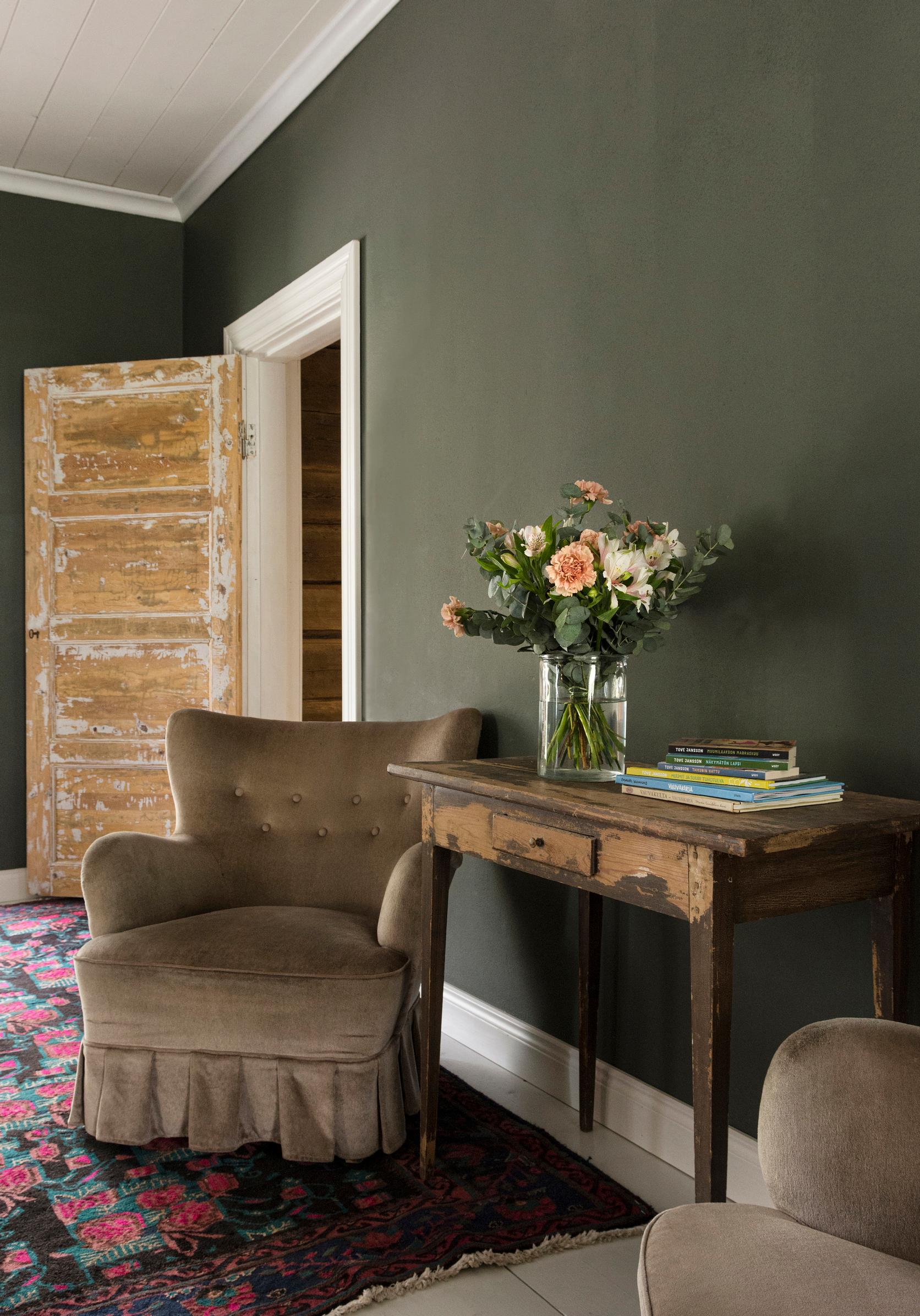
I think we should all learn to deal with more things being unfinished—and I have to keep reminding myself of that too.
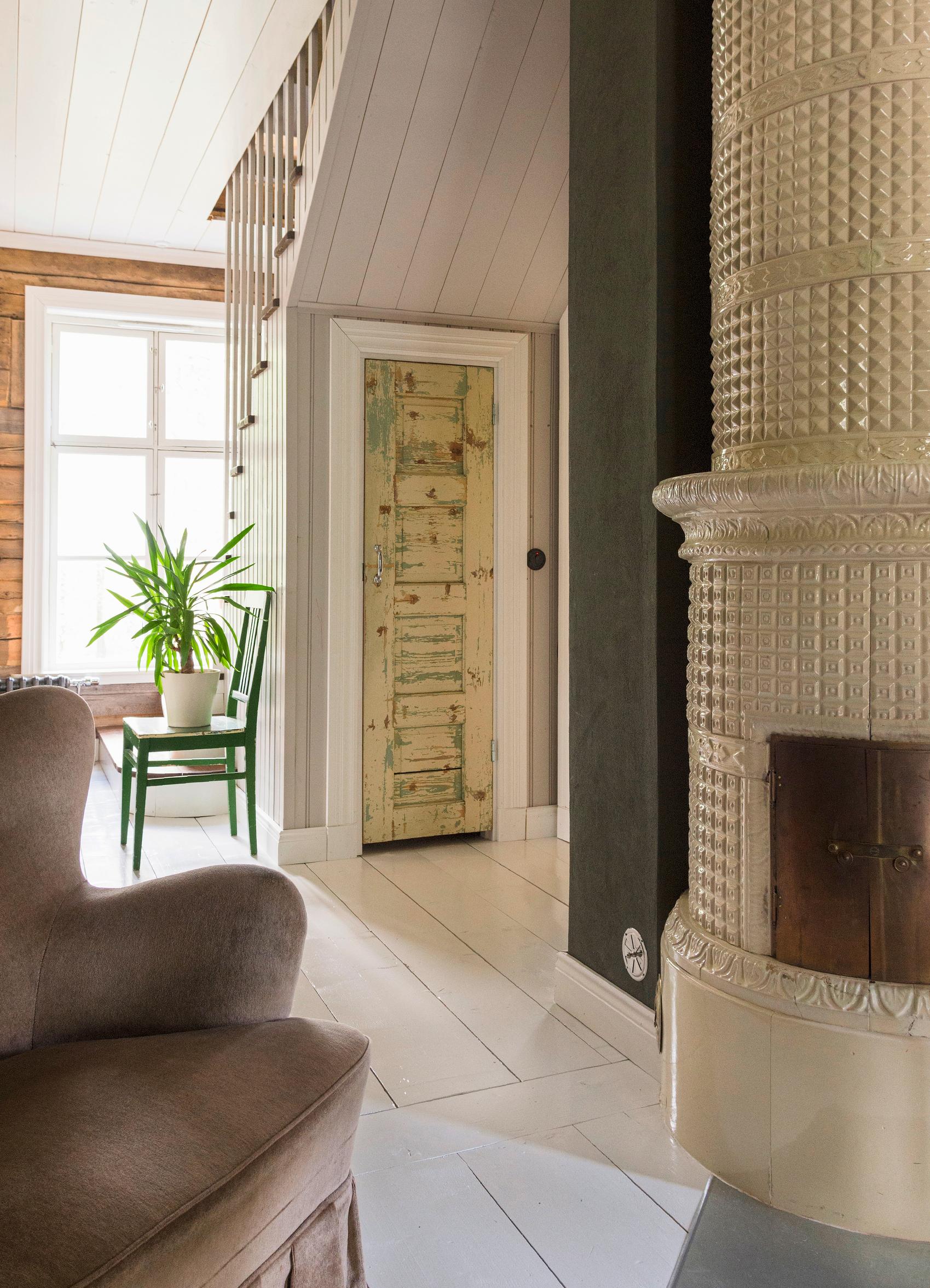
This project has demanded significant patience and mutual trust. In the first autumn, Mikko and a logging machine operator who came to help placed the logs in the pouring rain. The beams slipped from the machine’s grip, making chips fly and cracking the most rotted logs in half. Mikko stayed calm and reassured his doubtful wife that these logs would still become their home. In the end, they needed 300 meters of replacement logs.
“Our closest brush with crisis was when I saw the windows Mikko had put in the porch bathroom. I’d dreamed of a space with a small window to open, to hear birds and let fresh air in. But the bathroom had a full-length window instead. We’re pretty easygoing, but that time I lost my cool,” Iida says, laughing.
Harjukumpu’s entryway is more romantic than the rest of the house. Instead of restoring it to its original form, the Nylanders built a wide porch with ornate windows, built-in benches, and pale beadboard walls that evoke a seaside villa. The porch was inspired by Dragsfjärd, where Iida tagged along on one of Mikko’s work trips. There, she fell in love with a villa that was being torn down. In addition to the porch idea, they took home some floor planks, which Mikko used to create a sturdy kitchen table.
Their interior decor style mixes vintage pieces with an industrial feel.
“A lot of people assumed we’d buy everything new, but that would be a total waste. We only bought kitchen chairs, bar stools, and sofa cushions and pillows new; everything else was gifted or found here and there. I really think people should be able to deal with things being less than perfect—something I keep telling myself,” Iida adds.
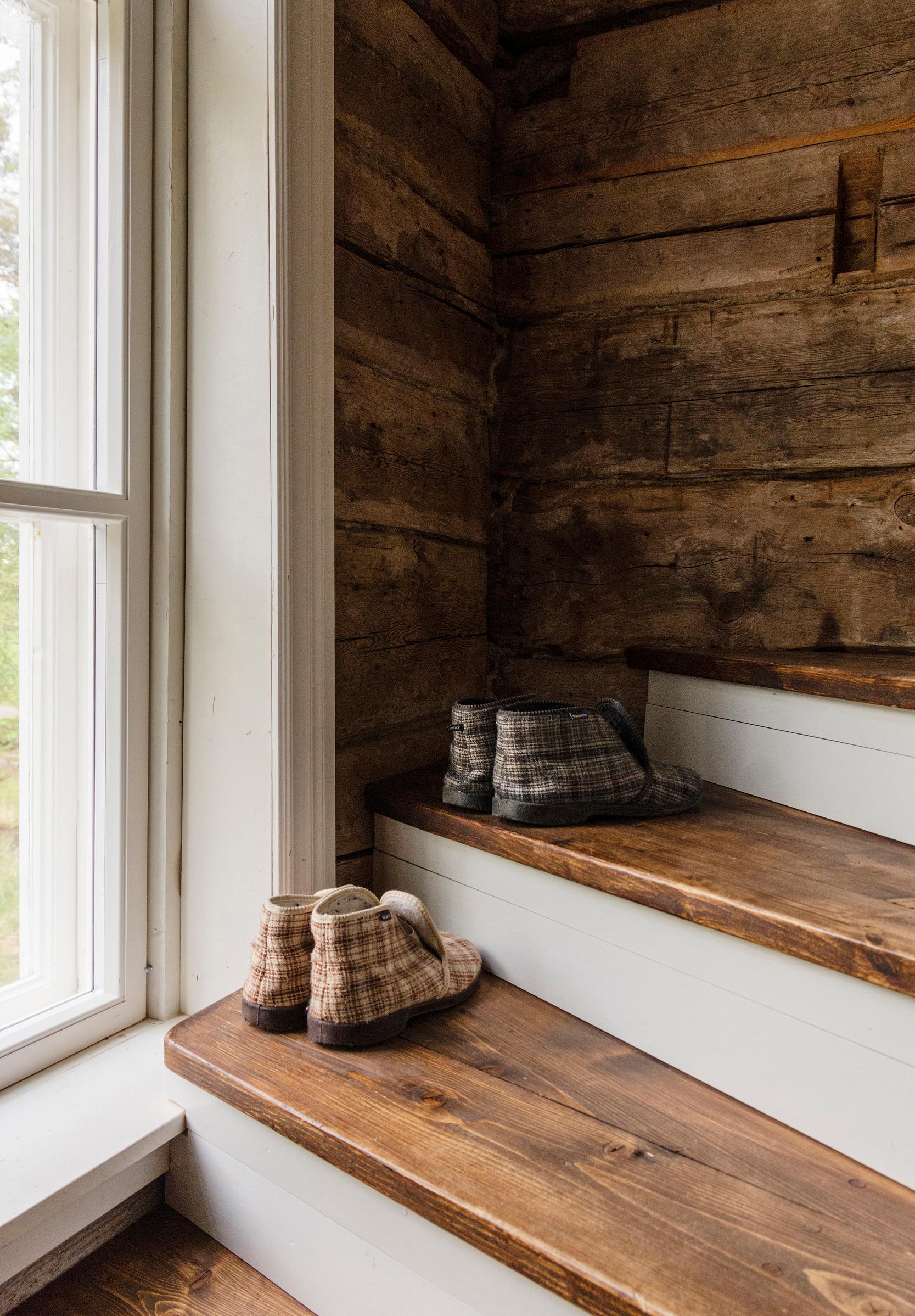
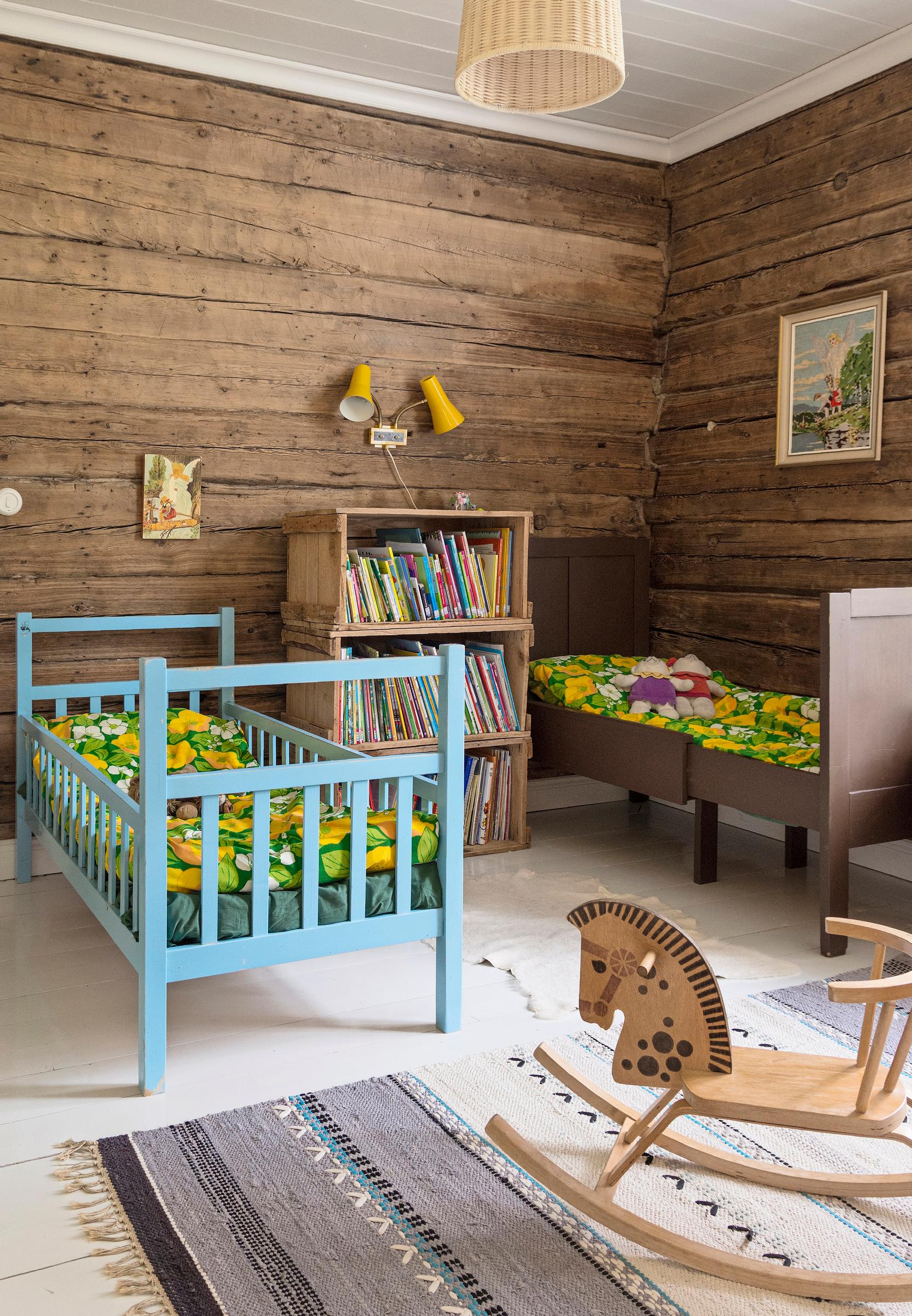
The Nylanders have used the old materials with care and efficiency. Mikko rebuilt the main room floor, plank by plank, with the original boards. They had new interior frames made for the towering windows so they could install insulated glass.
Most surfaces were treated using traditional, breathable methods. The only exception is the paint on the main room walls. The shade of purple they chose bothered Iida so much that she eventually loaded the kids into the car and took her color samples to an interior design business. They offered free help if she bought her paint there. She went home and painted the walls burgundy. The paint didn’t have a natural oil base, but the color was exactly what she wanted.
Beneath the paint is a layer of clay plaster. Mikko made the kitchen countertops and island himself with concrete. As the primary cook in the house, he wanted plenty of workspace and a smooth surface that could take heat and cold.
“It’s the low-budget version of a stone countertop,” Mikko says, patting the surface, which is sanded and sealed with oil wax.
“It works perfectly for making gingerbread cookies and rye bread with the kids—I’ve tested it all,” he adds.
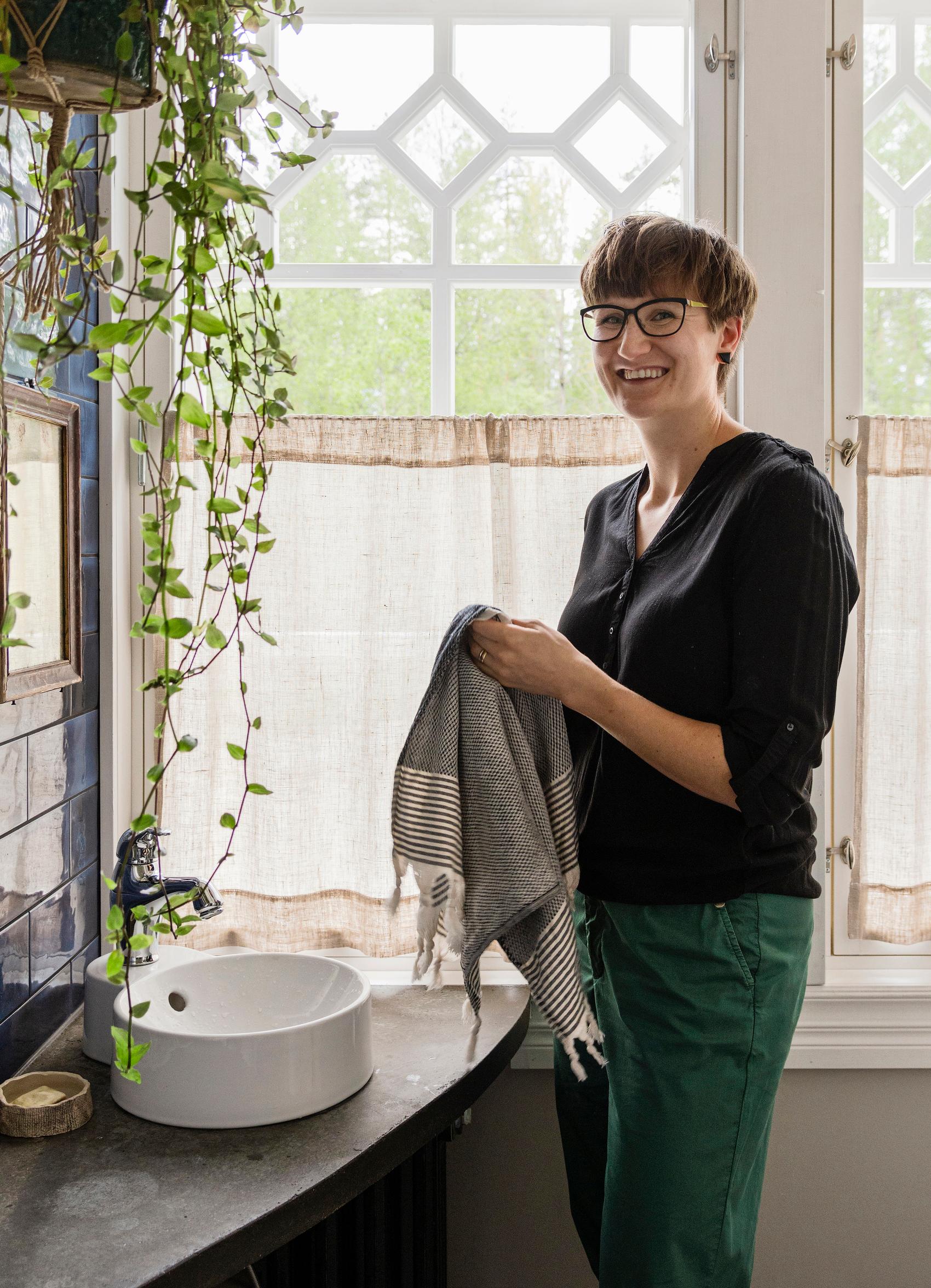
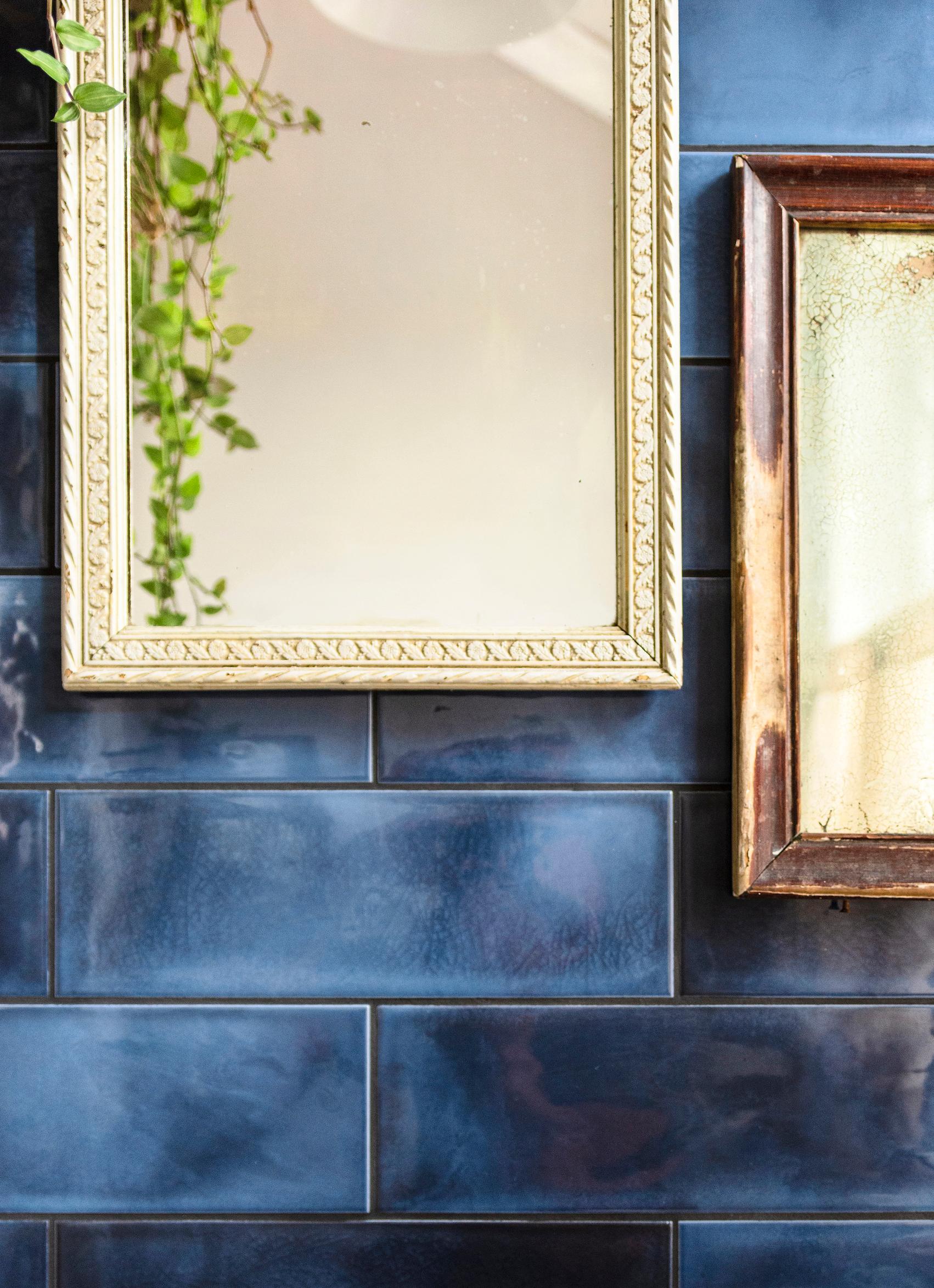
The Nylanders moved in last November and used the main room stove for heat throughout the winter. It stays warm for a long time, but without interior doors from the porch, cold air was a problem during the harshest frosts. Now Iida understands why her parents always reminded everyone to close doors.
Harjukumpu’s weather-resistant larch siding has been left to gray at its own pace. It takes a while, but the family is in no rush.
Mikko had been working alongside his father on heritage building sites since he was 12, so he knew the house wouldn’t be finished in a year or two. Their five-year plan has been forgiving.
“The good thing about a long construction timeline is that you can take your time deciding how to do things,” says Mikko, who cut back on his masonry jobs during the process.
“It was worth it. If we had hired someone else for the same amount of work, it would’ve cost around 240,000 euros.”
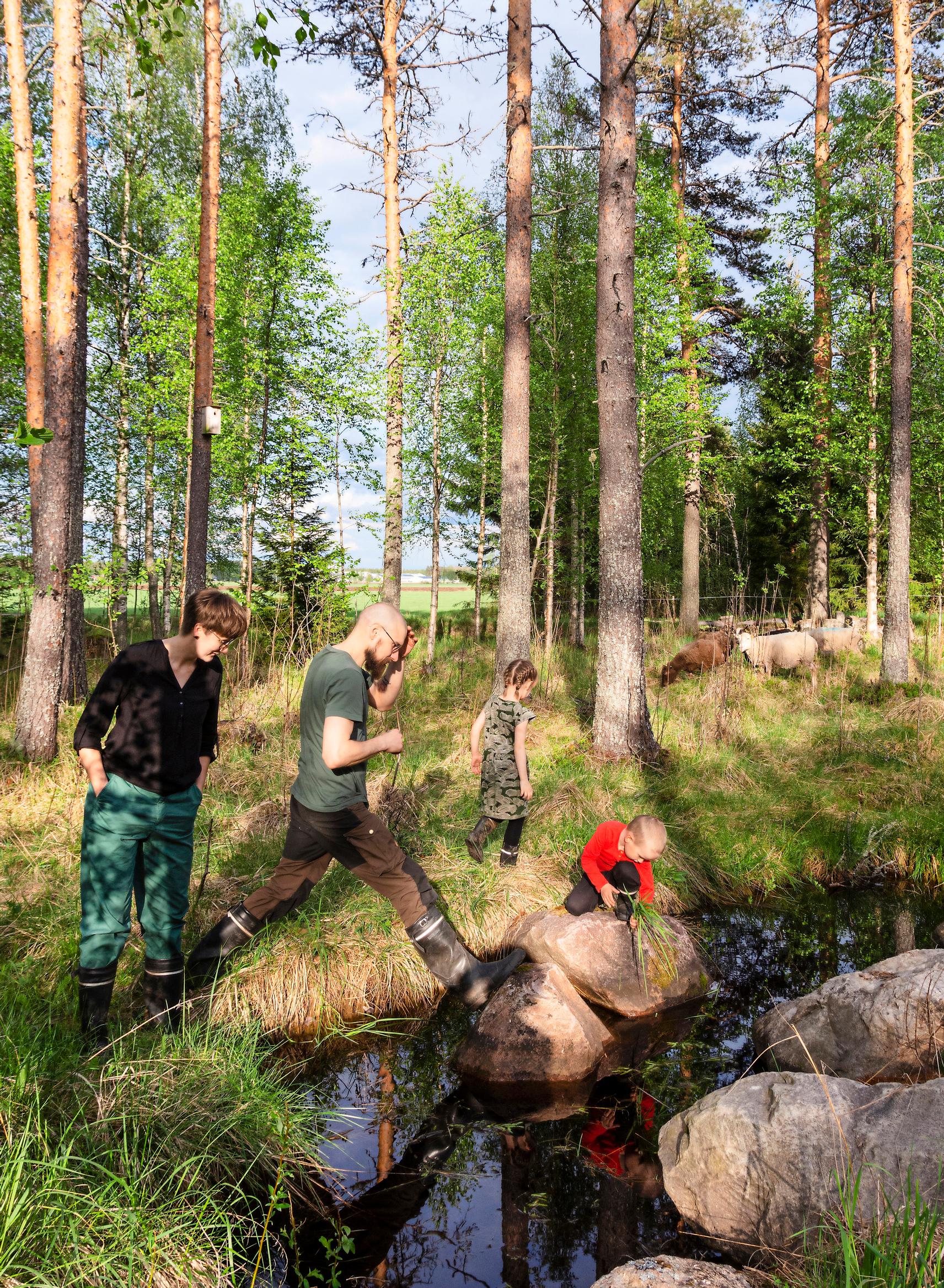
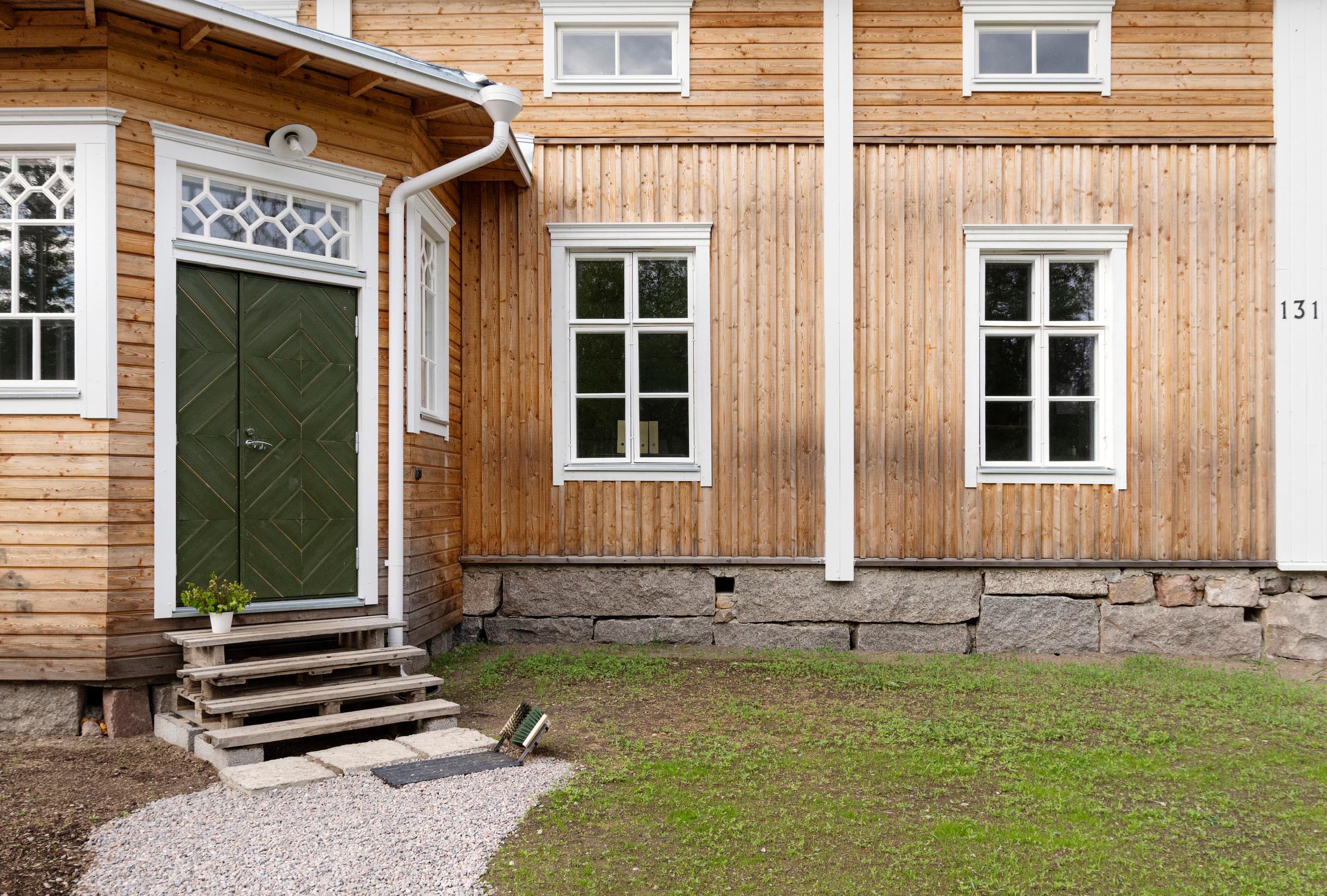
Sometime in the future, when they’ve recovered from the demands of building and feel financially ready, the Nylanders plan to add extra rooms upstairs for the kids and a hobby space for Mikko—or perhaps they’ll make Harjukumpu a guesthouse once again.
Iida’s great-grandmother was famous for her hospitality, even those others would not let in could stay the night.
“I’d like to be like her and leave the doors open so people can come and go,” Iida says.
And that’s how the family lives today. During the build, Harjukumpu hosted countless memorable work-party days, which the family recalls with gratitude. They’ve also welcomed their first international guests. The Nylanders often stay in locals’ homes when they travel and now happily offer the same hospitality to visitors—free of charge.
“A German girl ended up staying with us for a couple of weeks to help with cleanup—and even came back again later.”


